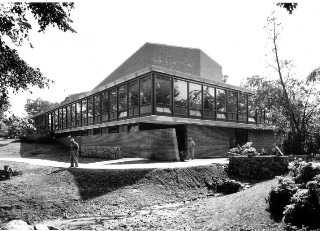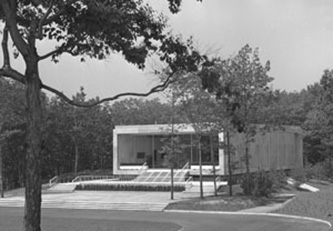The Role of Max Abramovitz
Harrison & Abramovitz
Max Abramovitz was educated at Columbia University and the Ecole des Beaux Arts in Paris. He was an apprentice to the architect, Wallace K. Harrison, with whom he developed the successful, long-term partnership of Harrison & Abramovitz. They taught design together at Yale University and are credited with revitalizing the study of architecture in the United States by introducing a modernist approach called “new academism” to the discipline. Max Abramovitz worked primarily in the Art Deco, International and Neo-classical styles of architecture.
The firm’s first significant project was to design the United Nations headquarters in New York City (1947-52). During that period, Abramovitz was asked to develop the first master plan at Brandeis, but the timing proved untenable; he joined the project several years later. In 1958, Abramovitz was commissioned to design the Philharmonic Hall at the Lincoln Center for Performing Arts — perhaps his most famous and recognizable work.
Max Abramovitz at Brandeis
President Abram Sachar’s first choice for a Brandeis master planner was his good friend and former student, Max Abramovitz. Already occupied with other building projects (including the United Nations), Abramovitz declined the offer, and Sachar hired the Saarinens instead. In time, Max Abramovitz would take over the Brandeis project, starting in the mid-1950s. He oversaw University planning for the next 30 years and designed the vast majority of buildings on the Brandeis campus.Abramovitz developed several versions of a master plan for Brandeis, the first of which was produced in 1959. He wanted to create a distinctive architectural identity for Brandeis and utilized materials that complimented the New England environment: red brick, fieldstone and glass.
Abramovitz became a University Fellow in 1962 and served on the University’s Board of Overseers and Creative Arts Commission. He provided consultation to other architects who designed later campus buildings, in the effort to maintain the aesthetics of the early master plan.

